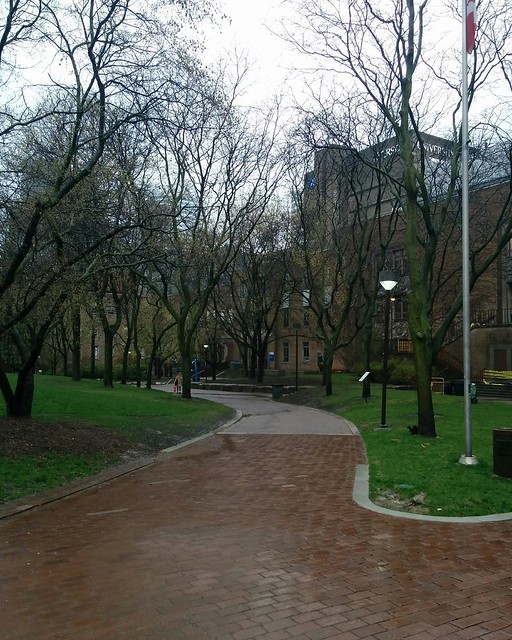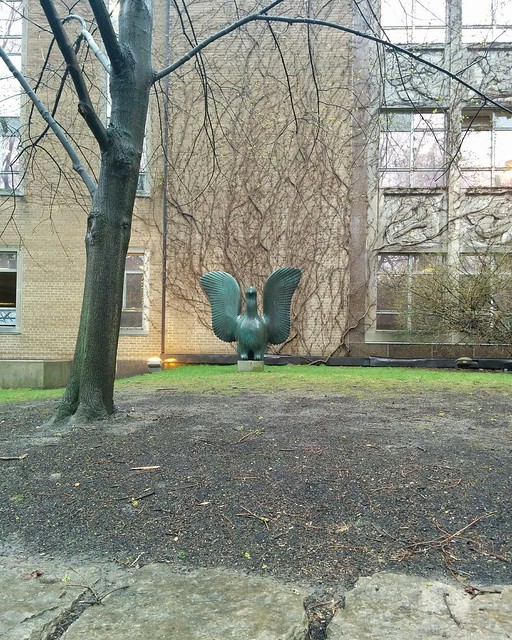I at first was not sure if the Hotel Europa, on the corner of Bridge Street and Erie Avenue in the old downtown of Niagara Falls just south of the train station and east of the bus station, was actually abandoned. I did see some open windows, and I did reason to myself that a hotel in such a prime location must surely be in use even if it might be a dive. But no, I later found out via a local that the hotel had been abandoned for years; one Flickr-hosted photo from 2007
identifies the hotel as abandoned even then. This is a shame: This building,
dating back to 1910, really is in a prime location. Were I the enterprising and well-funded sort, I might well try to make a go of this place. I might even make this incarnation succeed.











